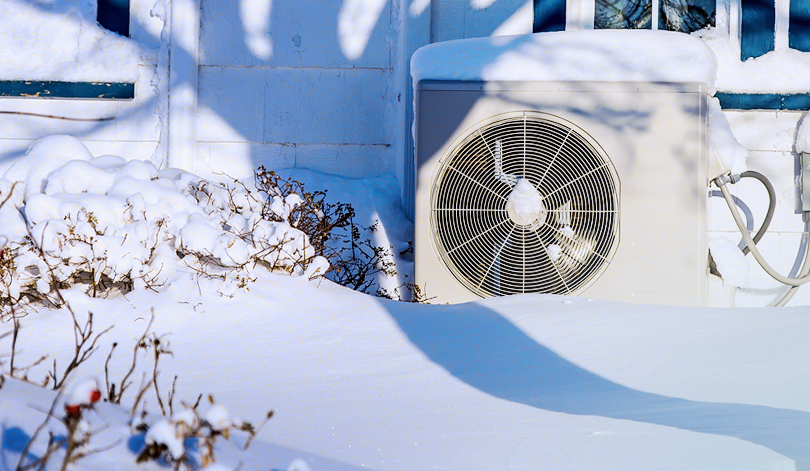Top Features to Look for in a Cold-Weather Heat Pump
Key Takeaways:
- Cold-weather heat pumps are essential for efficient and reliable heating in colder climates.
- Consider features like variable-speed compressors, dual-fuel capabilities, and advanced defrost technology.
- Proper insulation, smart controls, and high-efficiency ratings enhance performance and energy savings.
Introduction
Living in regions with cold climates comes with unique challenges, particularly in keeping homes warm and energy bills manageable. This is where a cold weather heat pump comes into play. Unlike conventional heating systems that primarily rely on the combustion of fossil fuels, modern heat pumps leverage advanced refrigeration technology to draw heat from the air or ground, even when temperatures drop significantly. By doing so, they offer a more sustainable and cost-efficient heating means. Understanding the essential features that enhance a heat pump’s effectiveness in cold climates is crucial for making an informed investment.
Heat pumps designed for cold weather are engineered to perform efficiently in conditions challenging standard heating systems. Their innovation lies not only in providing reliable heating but also in doing so with minimal environmental impact. Recognizing these attributes can help you choose a system that ensures your home remains a haven of warmth and comfort, even when the mercury drops.
Variable-Speed Compressors
One of the standout features of any cold-weather heat pump is the inclusion of a variable-speed compressor. This component is key to maintaining consistent indoor temperatures while optimizing energy efficiency. Unlike fixed-speed compressors, which operate at constant performance levels, variable-speed compressors adjust their function according to the immediate demands of the household. This means that when only a slight adjustment in temperature is needed, the system doesn’t expend excess energy.
Variable-speed compressors also reduce operational noise by modulating power usage. They facilitate a quiet, peaceful home environment without compromising on warmth. Furthermore, these compressors enhance the system’s longevity by reducing the frequency of start-stop cycles, which can cause significant wear over time. Essentially, they offer a seamless blend of comfort, efficiency, and durability that is hard to match.
Dual-Fuel Capabilities
Dual-fuel capability is an innovation that combines the best aspects of electric heat pumps and gas furnaces. When temperatures are moderately cold, the heat pump functions independently to provide efficient heating, utilizing electricity as its energy source. However, as outdoor temperatures plunge, the system smartly transitions to using a gas furnace, which performs better in extremely low temperatures. This switch is beneficial as it ensures continued comfort without a spike in energy consumption.
This dual approach maximizes efficiency year-round and offers homeowners cost savings on utility bills. It also provides environmental benefits by reducing the reliance on more carbon-intensive heating methods except when necessary. Dual-fuel systems’ flexibility ensures they can adeptly handle a broader range of temperature fluctuations, which is critical for locations that experience harsh winters.
Advanced Defrost Technology
For heat pumps in cold climates, frost accumulation on the outdoor unit can significantly degrade system efficiency. Advanced defrost technology is indispensable in these scenarios as it ensures the unit continues to operate optimally. This technology typically employs sensors to detect frost formation and initiates a defrost cycle only when required, thereby conserving energy.
Advanced defrost systems maintain adequate airflow and heating capacity by preventing ice build-up. Additionally, they protect the heat pump’s physical components from damage caused by excessive frost, contributing to the system’s overall durability and reliability. Installing a heat pump with an efficient defrost capability not only prolongs its operating life but also maintains consistent performance, which is particularly valuable during prolonged cold spells.
Proper Insulation
Insulation might not be a feature of the heat pump itself, but its role in enhancing the system’s efficiency is profound. Proper insulation minimizes heat loss and keeps the warmth generated by the heat pump contained within the house. This means the system doesn’t have to work as hard to maintain a comfortable indoor temperature, reducing energy consumption and lowering costs.
When considering insulation, evaluating the building structure and the ducts through which warm air is delivered is imperative. Sealing leaks and improving insulation in attics, walls, and floors can bolster the overall efficiency of your heating system. A well-insulated home with a high-performance heat pump creates the ideal warm, energy-efficient, cost-effective environment.
Smart Controls
Smart controls are revolutionizing how homeowners interact with their heating systems. Offering connectivity through apps or smart home hubs, these controls provide unmatched convenience in managing your home’s climate. Whether adjusting settings on the go or programming heating schedules, smart controls enhance efficiency by adapting operations to your preferences and lifestyle habits.
Moreover, many innovative systems come equipped with learning functionalities, which analyze usage patterns to optimize heating cycles. This capability ensures that the system operates only when necessary, effectively reducing energy use and extending the system’s lifespan. Such features not only contribute to a reduction in energy costs but also enhance the comfort and convenience of maintaining your home environment.
High-Efficiency Ratings
Efficiency ratings like SEER and HSPF are critical when assessing a heat pump’s likely performance. A higher Seasonal Energy Efficiency Ratio (SEER) means the unit uses less energy to produce the same cooling output. At the same time, the Heating Seasonal Performance Factor (HSPF) rating applies to heating efficiency. Selecting a superior-rated heat pump maximizes energy savings and minimizes environmental impact over the system’s lifetime.
Efficiency ratings provide a straightforward comparison between different models, helping you make an informed purchase. Investing in a high-efficiency model means long-term energy bill savings and underscores a commitment to sustainable living. As utility costs continue to rise, prioritizing these ratings becomes a matter of saving money and an ethical choice toward reducing carbon footprint.
Conclusion
Selecting a cold-weather heat pump that fits your needs requires understanding the features that enhance efficiency and performance. Each feature is vital in maintaining comfort and reducing operational costs, from variable-speed compressors and dual-fuel capabilities to advanced defrost technology and intelligent controls. Coupled with appropriate home insulation and high-efficiency ratings, these attributes ensure your home remains warm and inviting through even the harshest winters. Investing in a robust heat pump equipped with modern technologies allows you to choose a solution that meets immediate heating needs and contributes to a more energy-efficient future.
Stay in touch to get more news & updates on Veri Fiedzine!






